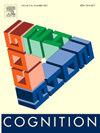Remembering facial age: Assimilation in memory toward categories of ‘Young’ and ‘Old’
IF 2.8
1区 心理学
Q1 PSYCHOLOGY, EXPERIMENTAL
引用次数: 0
Abstract
When we meet someone, we make all sorts of judgments based on their age. But how is a person's age represented in the mind at all: do we remember someone as younger, or older, than they actually were? In a matching-from-memory task, observers briefly saw a target face which was either Young (30 years old) or Old (60 years old). Afterward, they saw two new decoy faces — 10 years younger, and 10 years older than the target. Observers were strongly biased to match Young targets to younger decoys, and Old targets to older decoys. These biases held across artificially aged and real faces, regardless of observers' own age, and even when the decoys' races and genders differed from that of the target — suggesting that a common mechanism underlies memory for facial age across races and genders. Additional experiments indicated that these memory biases reflect assimilation toward visual category centers, rather than toward extremes. Thus, social categories of ‘young’ and ‘old’ shape and distort our memories of faces.
记住面部年龄:记忆中对“年轻”和“年老”类别的同化
当我们遇到某人时,我们会根据他们的年龄做出各种各样的判断。但是,一个人的年龄究竟是如何在大脑中表现出来的:我们对一个人的记忆是比实际年龄更年轻,还是更年长?在记忆匹配任务中,观察者短暂地看到一张年轻(30岁)或年老(60岁)的目标脸。之后,他们看到了两张新的诱饵脸——比目标小10岁,比目标大10岁。观察者强烈倾向于将年轻的目标与年轻的诱饵相匹配,将年老的目标与年老的诱饵相匹配。不管观察者自己的年龄如何,甚至当诱饵的种族和性别与目标不同时,这些偏见在人为变老和真实面孔之间都存在,这表明,不同种族和性别的人对面部年龄的记忆存在共同的机制。另外的实验表明,这些记忆偏差反映了对视觉类别中心的同化,而不是对极端的同化。因此,“年轻”和“年老”的社会分类塑造并扭曲了我们对面孔的记忆。
本文章由计算机程序翻译,如有差异,请以英文原文为准。
求助全文
约1分钟内获得全文
求助全文
来源期刊

Cognition
PSYCHOLOGY, EXPERIMENTAL-
CiteScore
6.40
自引率
5.90%
发文量
283
期刊介绍:
Cognition is an international journal that publishes theoretical and experimental papers on the study of the mind. It covers a wide variety of subjects concerning all the different aspects of cognition, ranging from biological and experimental studies to formal analysis. Contributions from the fields of psychology, neuroscience, linguistics, computer science, mathematics, ethology and philosophy are welcome in this journal provided that they have some bearing on the functioning of the mind. In addition, the journal serves as a forum for discussion of social and political aspects of cognitive science.
 求助内容:
求助内容: 应助结果提醒方式:
应助结果提醒方式:


